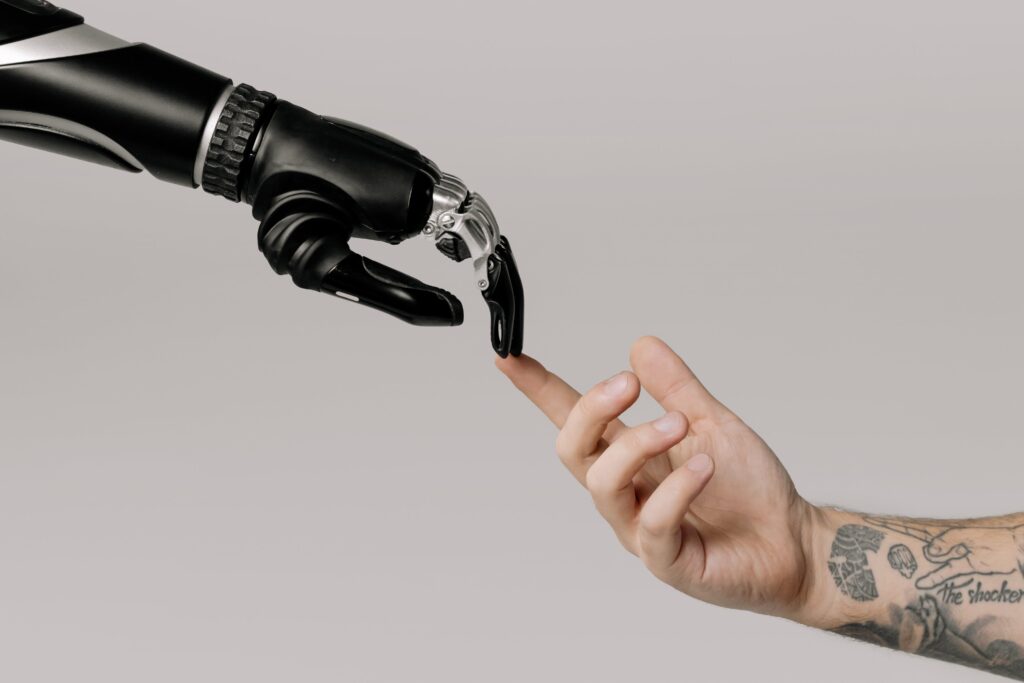Artificial intelligence

AI, short for Artificial Intelligence, refers to the development of computer systems that can perform tasks that typically require human intelligence. It involves creating machines or software that can mimic cognitive functions like learning, problem-solving, perception, language understanding, and decision-making. Here are some types of AI, Their techniques and approaches and their functions.
Types of AI:
Narrow AI (Weak AI): This type of AI is designed for a specific task or a narrow set of tasks. Examples include virtual personal assistants like Siri or Alexa, recommendation algorithms used by streaming services, and chatbots for customer service.Weak AI has proven to be immensely useful in various industries and applications by automating specific tasks, improving efficiency, and enhancing user experiences. However, its limitations include a lack of general intelligence, reliance on predefined data, and an inability to perform tasks beyond its programmed scope. Despite these limitations, Narrow AI continues to drive innovation and has a significant impact on technology and daily life.The are many types of Weak AI and they have many characteristics such as:
- Specialized Functionality: Weak AI systems are specialized to perform a specific task or a narrow set of tasks. For example, speech recognition in virtual assistants like Siri or Alexa, recommendation algorithms used by streaming services, or image recognition software.
- Limited Scope: These AI systems are designed for specific applications and lack the ability to generalize knowledge or perform tasks outside their defined domain. For instance, a chatbot programmed for customer service might not excel in medical diagnosis.
- Task-Specific Learning: They often use machine learning techniques to improve their performance on a particular task by learning from data related to that task. However, this learning doesn’t transfer to other unrelated tasks.
- Reliance on Data: Weak AI heavily relies on data for training and making decisions. The more data they are exposed to, the better they can perform within their specific domain.
General AI (Strong AI): Now we are going to talk about Strong AI also known as General AI. Strong AI, also known as Artificial General Intelligence (AGI) or True AI, refers to a theoretical form of artificial intelligence that exhibits a level of intelligence and cognitive abilities comparable to that of a human being across a wide range of tasks and contexts. Unlike weak AI, which is designed for specific tasks, strong AI possesses general intelligence and can understand, learn, reason, and apply knowledge in diverse situations similar to human intelligence and applying knowledge across various domains. True general AI is still theoretical and hasn’t been achieved yet.The pursuit of Strong AI remains a long-term and ambitious goal in the field of artificial intelligence. Researchers continue to explore and advance various AI techniques and paradigms, striving to develop systems that approach or achieve human-level intelligence across diverse domains. Weak AI have different characteristics compared to AGI, here are the characteristics of AGI:
- Generalized Intelligence: Strong AI systems would have a broad spectrum of cognitive abilities, allowing them to perform tasks and solve problems across multiple domains, akin to human cognitive capabilities.
- Adaptability and Learning: They would not only excel in specific tasks but also be capable of learning new tasks and acquiring knowledge without requiring extensive programming or explicit instructions.
- Reasoning and Understanding: Strong AI would be able to understand complex concepts, reason, analyze information, and make decisions autonomously, often in ways that are not explicitly programmed.
- Self-awareness and Consciousness (Potentially): Some discussions around Strong AI involve the potential for self-awareness and consciousness, although this remains a topic of philosophical debate and isn’t a requirement for AGI.

As I explained achieving Strong AI remains a goal rather than a realized technology. While significant progress has been made in various AI fields like machine learning, natural language processing, and computer vision, creating a system that embodies true general intelligence comparable to human cognition is yet to be achieved.
Challenges in achieving Strong AI include:
- Complexity of Human Intelligence: Human intelligence is multifaceted and intricate, encompassing diverse cognitive abilities that are challenging to replicate in machines.
- Ethical and Societal Implications: Developing machines with human-like intelligence raises ethical concerns related to control, autonomy, privacy, and the potential impact on society, employment, and human-machine relationships.
- Technological Limitations: It involves addressing significant technological hurdles, such as developing algorithms capable of abstract reasoning, common-sense understanding, and contextually nuanced decision-making.
- Safety and Control: Ensuring that AGI systems operate safely, ethically, and in alignment with human values without unintended consequences or harmful behaviors is a critical concern.

AI Techniques and Approaches:
Artificial Intelligence (AI) has witnessed remarkable advancements, fueled by diverse techniques and approaches that enable machines to simulate human-like intelligence. These methodologies drive the innovation shaping AI’s capabilities and applications across industries. Let’s delve into some prominent techniques and approaches employed in AI development.
- Machine Learning: Machine learning stands as a cornerstone of AI, empowering systems to learn from data and improve performance without explicit programming. It encompasses various techniques:
- Supervised Learning: Algorithms learn from labeled data, making predictions or classifications based on patterns identified during training.
- Unsupervised Learning: Machines uncover patterns from unlabeled data, identifying relationships or structures within the dataset.
- Reinforcement Learning: Systems learn through trial and error, receiving feedback based on their actions and adjusting behaviors to maximize rewards.
- Deep Learning: Deep learning, a subset of machine learning, involves artificial neural networks with multiple layers capable of learning representations from complex data. It excels in processing unstructured data like images, text, and speech, enabling breakthroughs in image recognition, natural language processing, and more.
- Natural Language Processing (NLP): NLP focuses on enabling machines to understand, interpret, and generate human language. It involves techniques such as sentiment analysis, language translation, text summarization, and chatbots, revolutionizing human-computer interaction.
- Computer Vision: Computer vision enables machines to interpret and understand visual information from images or videos. Techniques include object detection, image segmentation, facial recognition, and medical image analysis, with applications ranging from autonomous vehicles to healthcare diagnostics.
- Expert Systems: Expert systems use knowledge-based reasoning to simulate human expertise in specific domains. These AI systems utilize rules and logic to make decisions or provide recommendations, making them valuable in areas like diagnostics and problem-solving.
- Genetic Algorithms: Inspired by biological evolution, genetic algorithms use optimization techniques to solve complex problems by mimicking natural selection and genetic recombination. They iteratively improve solutions to find optimal or near-optimal solutions in various domains.
- Fuzzy Logic: Fuzzy logic deals with reasoning that is approximate rather than precise. It handles uncertainty by accommodating imprecise information and vague concepts, making it suitable for systems where strict binary logic may not apply.
- Robotics and Automation: AI techniques are employed in robotics and automation to enable machines to perceive their environment, make decisions, and perform tasks autonomously. This includes applications in industrial automation, autonomous vehicles, and smart manufacturing.
AI Applications in Various Fields:
- Healthcare: AI is used for disease prediction, medical image analysis, drug discovery, personalized treatment plans, and improving healthcare operations.
- Finance: In finance, AI is employed for fraud detection, algorithmic trading, risk assessment, and customer service through chatbots.
- Transportation: AI is utilized in autonomous vehicles for navigation and decision-making, traffic management systems, and predictive maintenance for vehicles and infrastructure.
- Education: AI can personalize learning experiences, adapt teaching methods to individual students, and provide automated assessments and feedback.
- Retail and Marketing: AI is used for personalized recommendations, supply chain optimization, customer behavior analysis, and targeted marketing campaigns.
- Manufacturing: AI helps in optimizing production processes, predictive maintenance of machinery, quality control, and supply chain management.
The field of AI continues to evolve rapidly, offering immense potential to transform various industries and aspects of our lives while also raising ethical considerations regarding privacy, biases in algorithms, job displacement, and the responsible use of AI technologies.
Click here to learn about the functions of AI and which ones are the best in every aspect!


Verstuur reactie